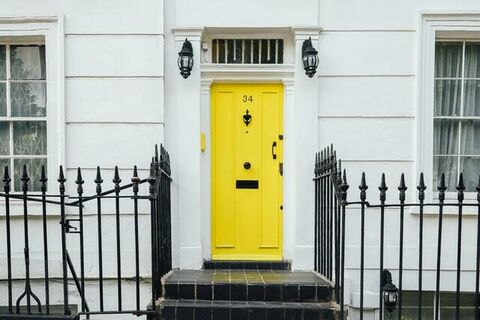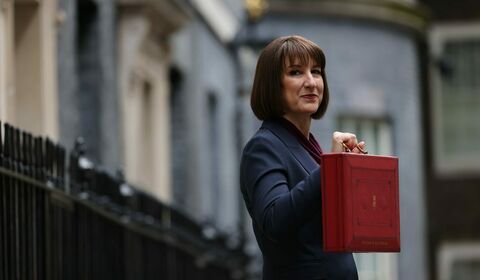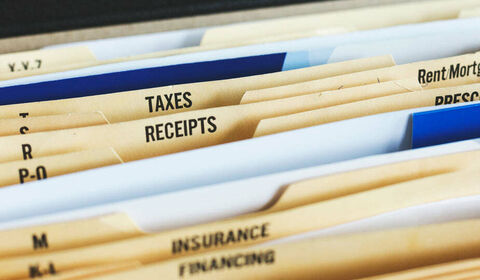Understanding Tax & Property
Tax & Property
Property in England and Northern Ireland
Stamp Duty Land Tax (SDLT)
SDLT was introduced on 1 December 2003 and replaced Stamp Duty in respect of land transactions.
SDLT is a tax that is generally payable on the purchase or transfer of land and property in England and Northern Ireland. It is also payable in respect of certain lease premiums.
Purchasers of property can register their ownership at the Land Registry only if they have a Land Transaction Certificate issued by HMRC. This certificate will only be issued when the purchase has been reported to HMRC on an SDLT return. All property transactions valued at £40,000 or more must be reported.
SDLT is usually chargeable by reference to the cash value of the transaction. However, the definition of ‘consideration’ is very wide and is intended to catch all sorts of situations where value might be given other than in cash. For example, if the purchaser agrees to do certain work on the property or to take on the mortgage debt secured on a property.
Rates of SDLT
The SDLT rates are applied on a graduated basis, like Income Tax. If for example, you purchased a property for £275,000 then the SDLT charge would be £3,750.
SDLT is payable at the following rates on residential properties:
|
Rate |
Residential property |
|
Zero |
£0 - £250,000 |
|
5% |
£250,001 - £925,000 |
|
10% |
£925,001 - £1,500,000 |
|
12% |
Over £1,500,000 |
The SDLT zero rate band was increased from £125,000 to £250,000 effective 23 September 2022. This resulted in the removal of the 2% band for properties ranging from £125,000 to £250,000. These changes are also temporary and set to revert back to the old rates on 31 March 2025.
No SDLT is payable for first-time buyers making a purchase of up to £425,000. The relief also applies to the first £425,000 for purchases up to £625,000. There is no relief available for first-time buyers spending more than £625,000 on a property.
These changes were initially announced as permanent but were later changed to a temporary measure. The temporary changes in the first-time buyers relief are due to come to an end on 31 March 2025 when the figures that applied before 23 September 2022 are due to come back into force. There are a number of requirements that must be met in order to qualify for the relief.
A higher rate of SDLT applies to purchases of additional residential property such as buy to let and second homes. The higher rate is 3% higher than the current SDLT rates*.
The higher rates apply to purchases of additional residential properties in England and Northern Ireland. The higher rate does not apply to individuals who own only one residential property, irrespective of the intended use of the property. There are also some other limited reliefs from the surcharge.
A special 15% rate* is applied to residential properties held in a 'corporate envelope' costing over £500,000.
There is a 2% SDLT surcharge on non-UK residents purchasing residential property in England and Northern Ireland applies.
The current rates of SDLT for the purchase of non-residential property are as follows:
|
Rate |
Non-residential property |
|
Zero |
£0 - £150,000 |
|
2% |
£150,001 - £250,000 |
|
5% |
Over £250,000 |
*[The government increased the higher rates of SDLT) payable by purchasers of additional dwellings from 3% to 5% above the standard residential rates. They also increased the rate of SDLT payable by companies and non-natural persons acquiring dwellings for more than £500,000, from 15% to 17%. These changes apply to transactions with an effective date on or after 31 October 2024].
Property in Scotland
Scottish Land and Buildings Transaction Tax (SLBTT)
The SLBTT came into force on 1 April 2015 and replaced SDLT in Scotland. There are two sets of rates for residential and non-residential properties.
|
SLBTT on residential properties |
||||
|
Rate |
Residential property |
|||
|
Zero |
£0 - £145,000 |
|||
|
2% |
£145,001 - £250,000 |
|||
|
5% |
£250,001 - £325,000 |
|||
|
10% |
£325,001 - £750,000 |
|||
|
12% |
Over £750,000 |
|||
|
SLBTT on non-residential and mixed-use properties |
||||
|
Rate |
Non-residential property |
|||
|
Zero |
£0 - £150,000 |
|||
|
1% |
£150,001 - £250,000 |
|||
|
5% |
Over £250,000 |
|||
These rates are applied on a graduated basis with the portion of the purchase price within each tier charged at the applicable rate.
The zero-rate band is extended to £175,000 (from £145,000) for first-time buyers. This limit also applies to first-time buyers buying a property above £175,000 who will benefit from the relief on the portion of the price below the threshold.
There is a 6% (4% prior to 16 December 2022) surcharge on these rates if a company buys a residential property, or if an individual buys a second or subsequent residential property.
Property in Wales
Welsh Land Transaction Tax (WLTT)
The WLTT was launched on 1 April 2018. In general, a transaction will be subject to WLTT if the land is situated in Wales. There are two sets of rates for residential and non-residential properties.
|
WLTT on residential properties |
|||
|
Rate |
Residential property |
||
|
Zero |
£0 - £225,000 |
||
|
6% |
£225,001 - £400,000 |
||
|
7.5% |
£400,001 - £750,000 |
||
|
10% |
£750,001 - £1,500,000 |
||
|
12% |
Over £750,000 |
||
These rates are applied on a graduated basis with the portion of the purchase price within each tier charged at the applicable rate.
There are currently no further measures specifically targeting first-time buyers in Wales.
There is a WLTT higher rate supplement of 3% on purchases of additional residential properties.
|
WLTT on non-residential and mixed-use properties |
||
|
Rate |
Non-residential property |
|
|
Zero |
£0 - £225,000 |
|
|
1% |
£225,001 - £250,000 |
|
|
5% |
£250,001 - £1,000,000 |
|
|
6% |
Over £1,000,000 |
|
Annual Tax on Enveloped Dwellings (ATED)
An Annual Tax on Enveloped Dwellings (ATED) came into effect from 1 April 2013. The annual tax is payable by certain non-natural persons that own interests in dwellings valued at more than £2 million. This provision affects certain companies, partnerships with company members and managers of collective investment schemes described in the legislation as non-natural persons (NNPs).
From 1 April 2024, ATED is chargeable for 2024-25 on property valued at:
- More than £500,000 but not more than £1 million – £4,400
- More than £1 million but not more than £2 million – £9,000
- More than £2 million but not more than £5 million – £30,550
- More than £5 million but not more than £10 million – £71,500
- More than £10 million but not more than £20 million – £143,550
- More than £20 million – £287,500
There are certain NNPs which may not be required to pay the ATED such as:
- property development, investment rental and trading businesses;
- residential properties open to the public for at least 28 days a year on a commercial basis;
- residential properties held for employee accommodation;
- residential properties owned by a charity and held for charitable purposes;
- working farmhouses;
- diplomatic properties; and,
- some other publicly-owned residential properties.
For the ATED period 1 April 2024 to 31 March 2025, both the return and payment were due to be made by 30 April 2024. A copy of the ATED return is available online and HMRC has published a comprehensive notice containing information about ATED together with instructions as to how to complete the form.
Replacement of Domestic Item Relief
The replacement of domestic items relief has been in place since April 2016. The relief allows landlords to claim tax relief when they replace movable furniture, furnishings, appliances and kitchenware in a rental property. The relief only applies when landlords actually replace furniture, furnishings, appliances and kitchenware. Landlords must also ensure they keep a record of any capital expenditure which has been incurred on an investment property.
It is also important to try and ensure that any domestic items that are bought with the property are listed in the contract. This would then mean that relief would be available when these items are replaced. In addition, it may be possible to reduce the stamp duty payable in certain circumstances by allocating a reasonable proportion of the purchase price for any domestic items included in the sale. There is no relief available for the initial cost of domestic items purchased for a new or existing rental property.
Page updated on 06/12/2024.



